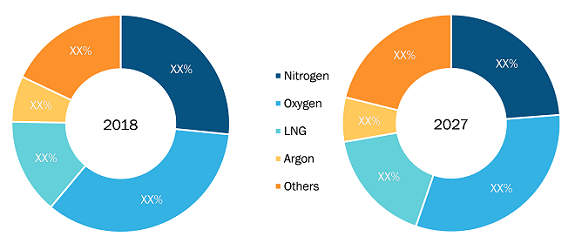According to The Insight Partners’ research, the cryogenic pump market was valued at US$ 1,862.6 million in 2018. The market is projected to reach US$ 2,817.6 million by 2027 with a CAGR growth of 4.9% during the forecast period. The increasing demand for liquified natutal gas and the rising demand for consumer electronics and application of cryopumps in semiconductor manufacturing are driving the forces of the market.
There is an increasing demand for liquefied natural gas, other clean energy fuels, and renewables as various countries focus on reducing CO2 emissions from the environment. The growth in natural gas production, majorly due to shale reserves in the US and the rise in the production of liquefied natural gas (LNG), is expected to boost the global gas-based generation capacity. Moreover, the main application of cryogenic pumps in the LNG market includes storage and transportation of the liquefied gas. The boosting demand for LNG is projected to drive demand for cryopump as this equipment facilitate safer, more reliable transport and storage of LNG.
The demand for consumer electronics is increasing fast, pushing suppliers to provide differentiated products in the market. Further, the increasing applications of wearable devices in healthcare and the manufacturing sectors have created huge demands for consumer electronics. Smart products that are now available in the market contain complex electronic systems that require excellent operations in the real world. The growing preference for device miniaturization, multiple wireless technologies support, faster data rates, and longer battery life demand highly sophisticated integrated circuits (ICs) incorporated in the devices.
On the contrary, the high installation and maintenance costs is the factor that hinders the market expansion.
Based on type, the global cryogenic pump market is bifurcated into centrifugal and positive displacement. From these, the centrifugal segment dominated the market growth with a share of 74.0% and market valued at US$ 1,377.7 million by 2018. The segment is further expected to dominate the market with a share of 70.1%, a market value of US$ 1,974.7 million, and a CAGR growing at 4.2% from 2019 to 2027.
By gas, the global cryogenic pump market is categorized into nitrogen, oxygen, LNG, argon, and others. In 2018, the oxygen segment led the market growth with a share of 33.7% and is anticipated to continue its dominance during the forecast period by accounting for 30.7% by 2027. The segment is projected to reach US$ 863.8 million by 2027 from US$ 626.9 million, increasing at a CAGR of 3.8% throughout the forecast period.
According to the industry vertical, the market is segmented by electronics, healthcare and pharmaceutical, energy and power, metallurgy, chemicals, and others. The energy and power segment dominated the market by capturing a share of 43.3% and a market value of US$ 805.9 million in 2018. The segment is assessed to further dominate the market in 2028 by accounting for US$ 1,265.5 million, 44.9% market share, and CAGR expected to grow by 5.3% from 2019 to 2027.
As per our regional point of reference, Asia Pacific held the market growth by capturing 37.3% market share and market valued at US$ 695.5 million in 2018. Further, it is anticipated to hold its dominance by holding a market share of 42.7% to reach US$ 1,202.5 million, growing at a CAGR of 6.4% during the forecast period.
Major players profiled in the global cryogenic pump market are Atlas Corpo AB; Elliott Group; Fives; Flowserve Corporation; Linde AG; PHPK Technologies; Nikkiso Co., Ltd; Ruhrpumpen Group SEHWA TECH, Inc; and Sumitomo Heavy Industries, Ltd.
· In August 2018, Atlas Corpo acquired Brooks Automation’s cryogenic business in which the company acquired locations for cryo pumps in the US and Mexico.
· Elliott Group merged with Ebara International Corporation, through which cryodynamics pumps and expanders are manufactured in Elliott’s headquarter.
· Fives was awarded a maintenance contract of the Cryomec Pumps in Russia in July 2019.


